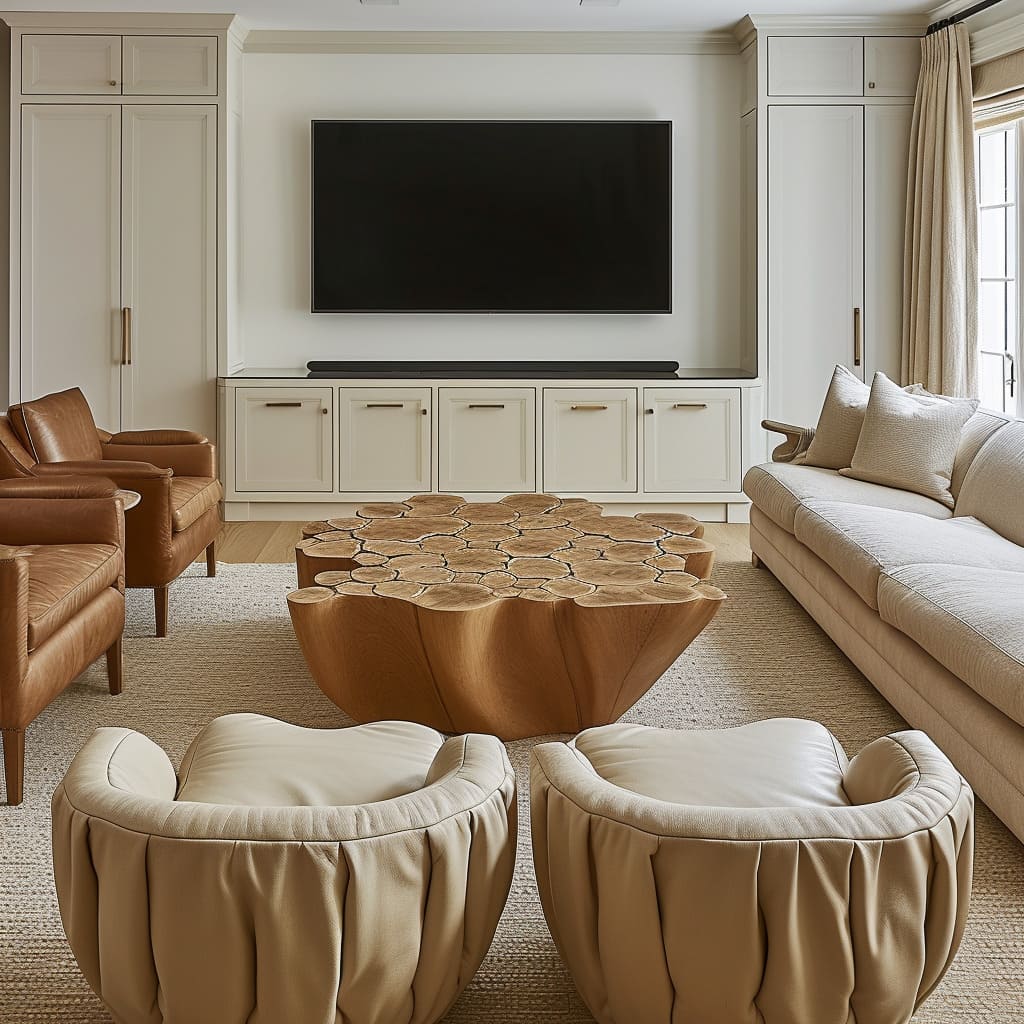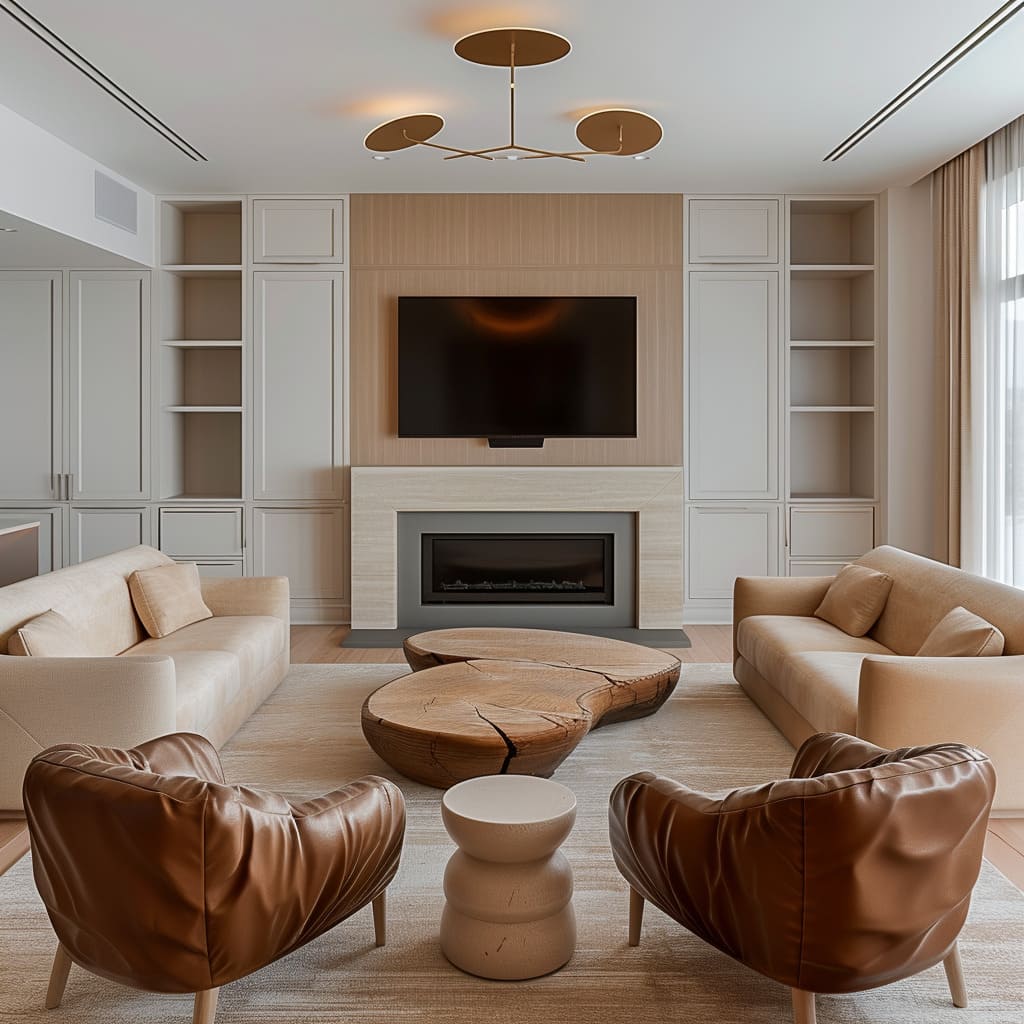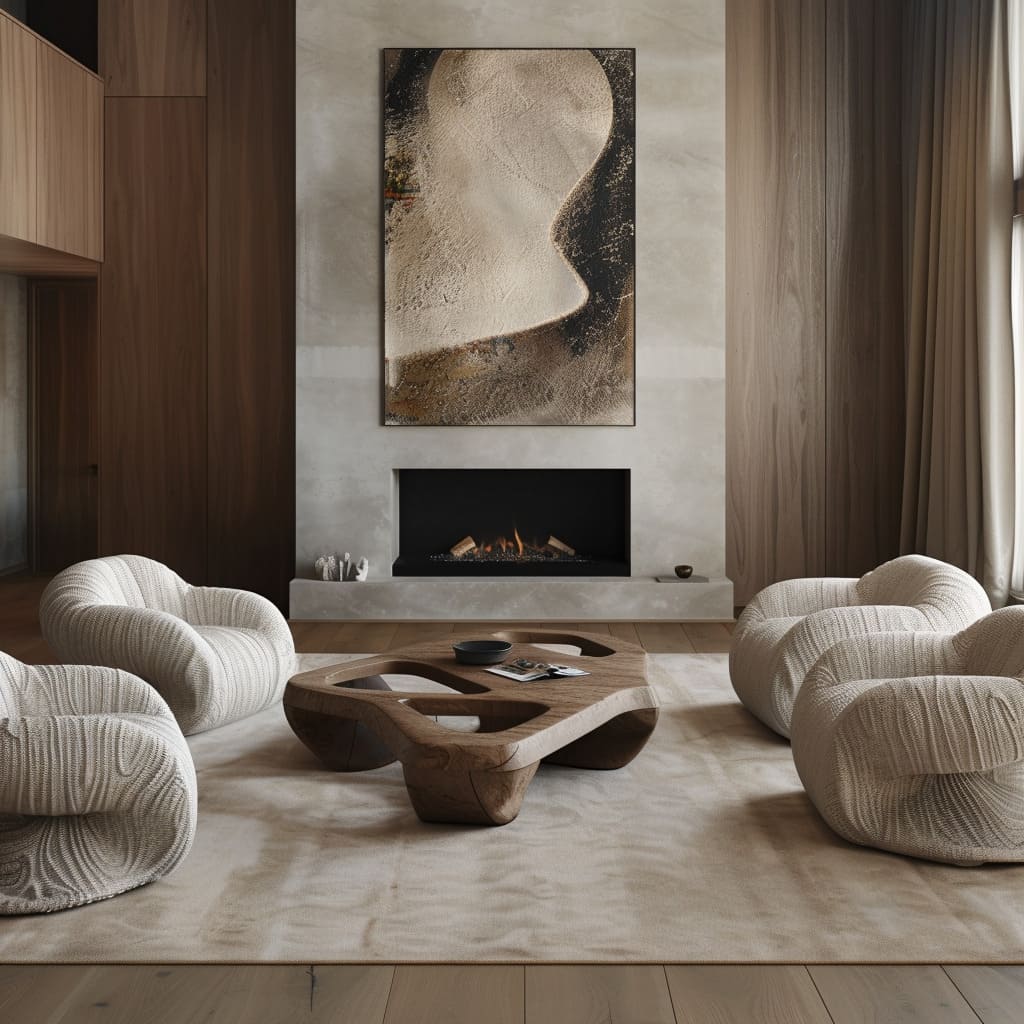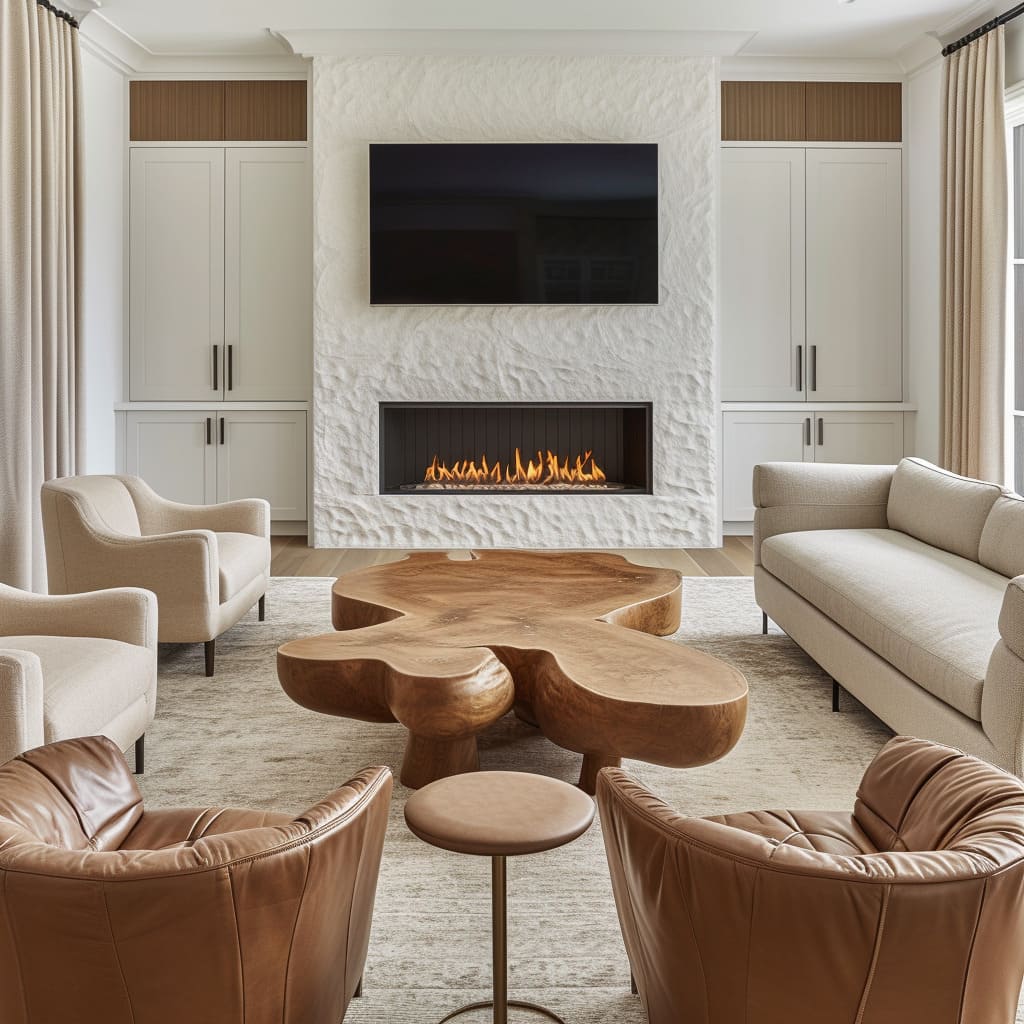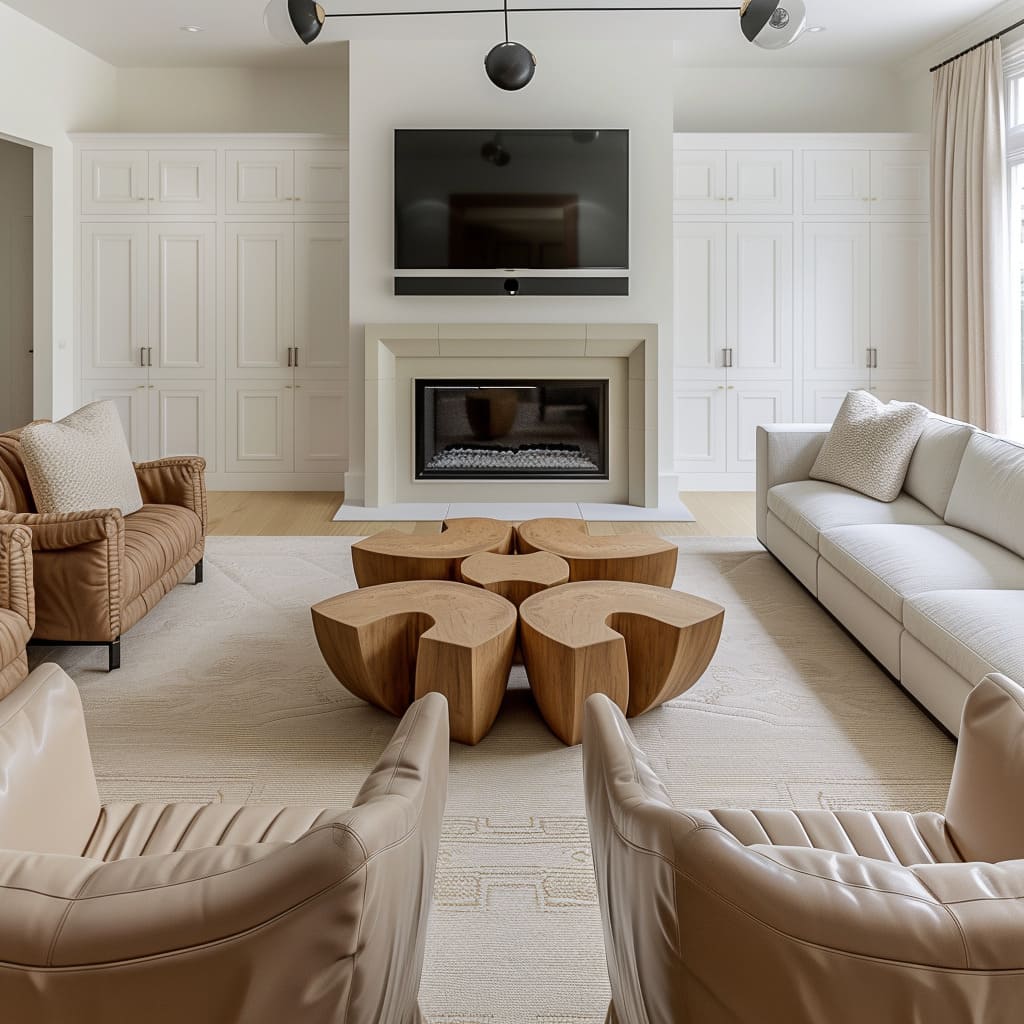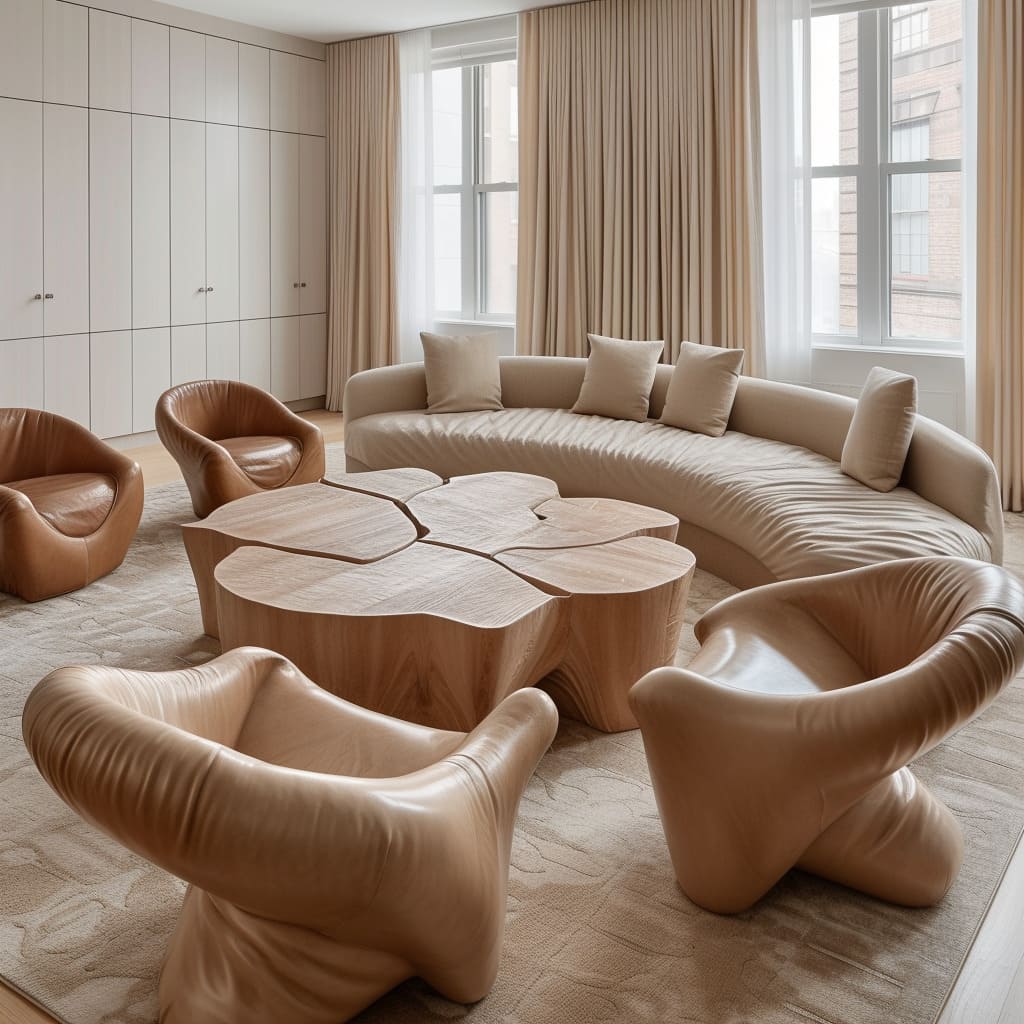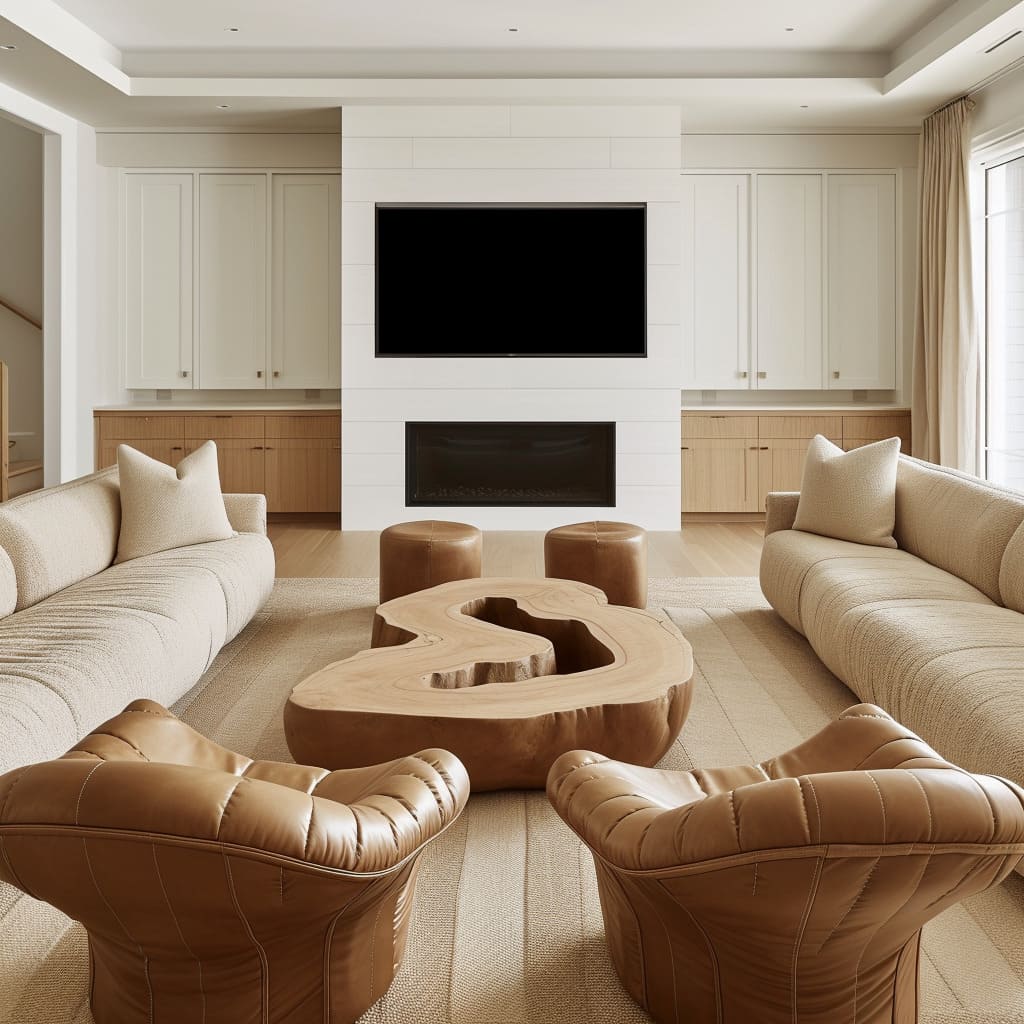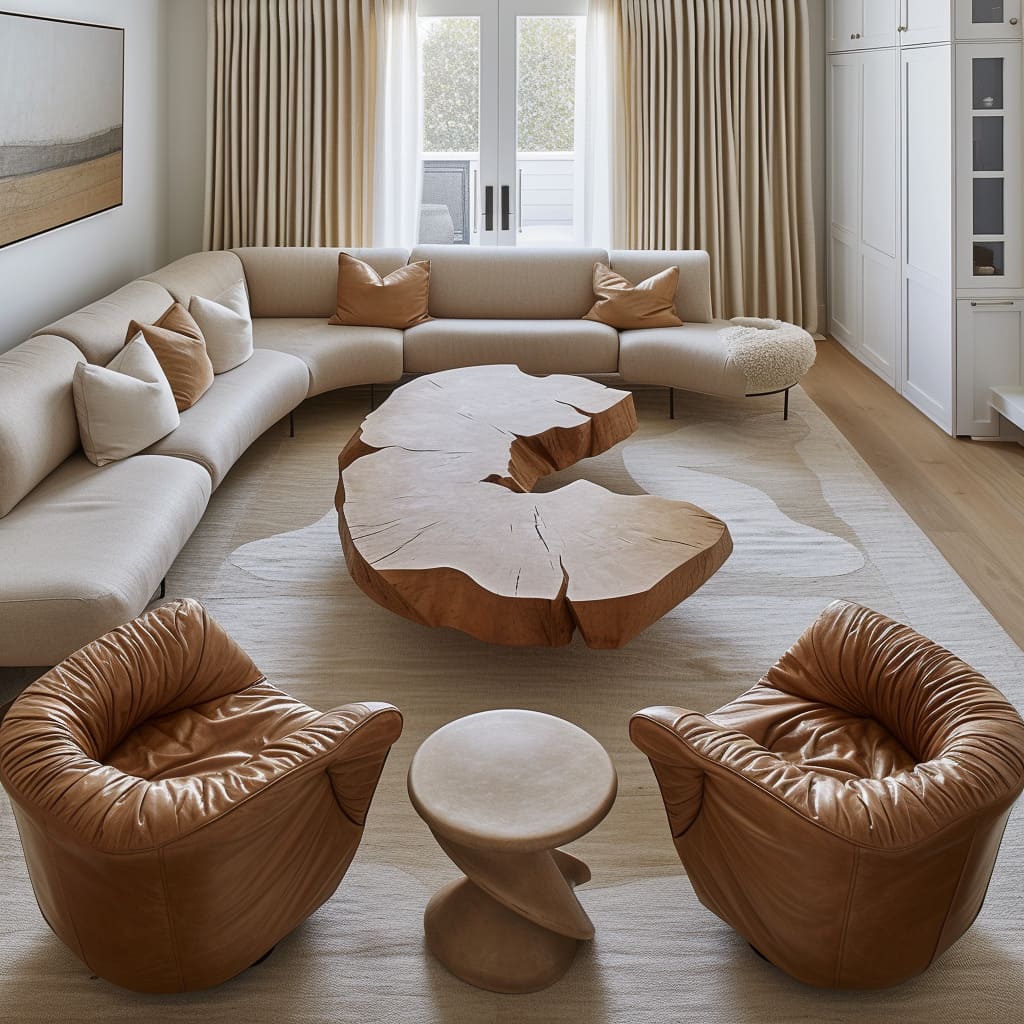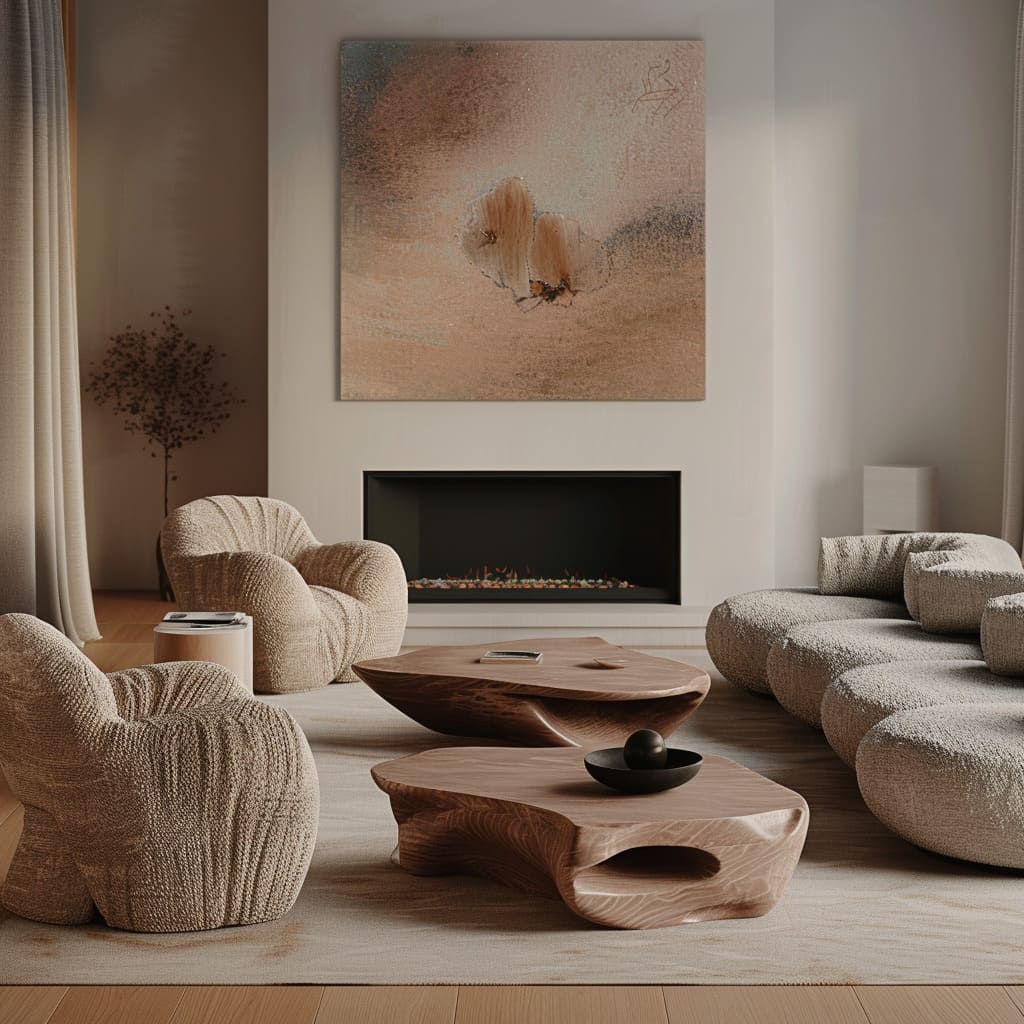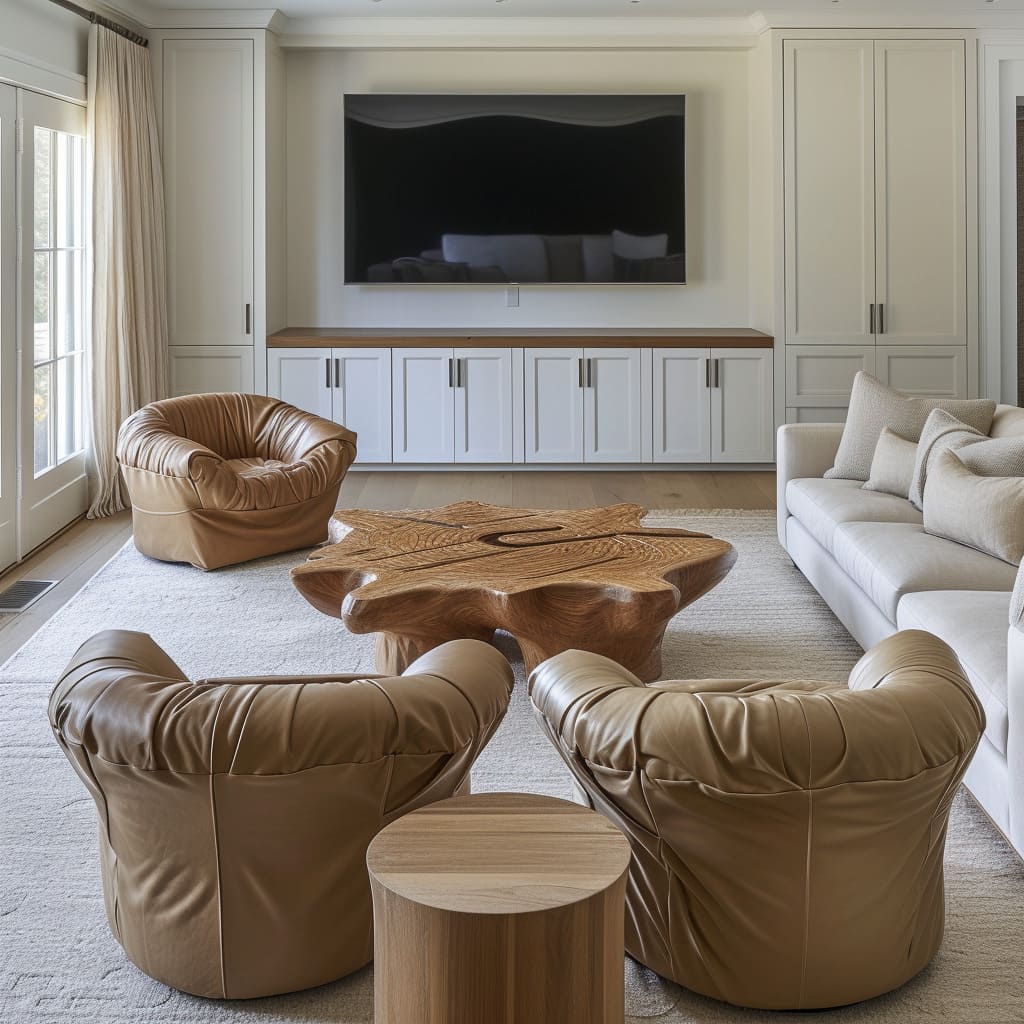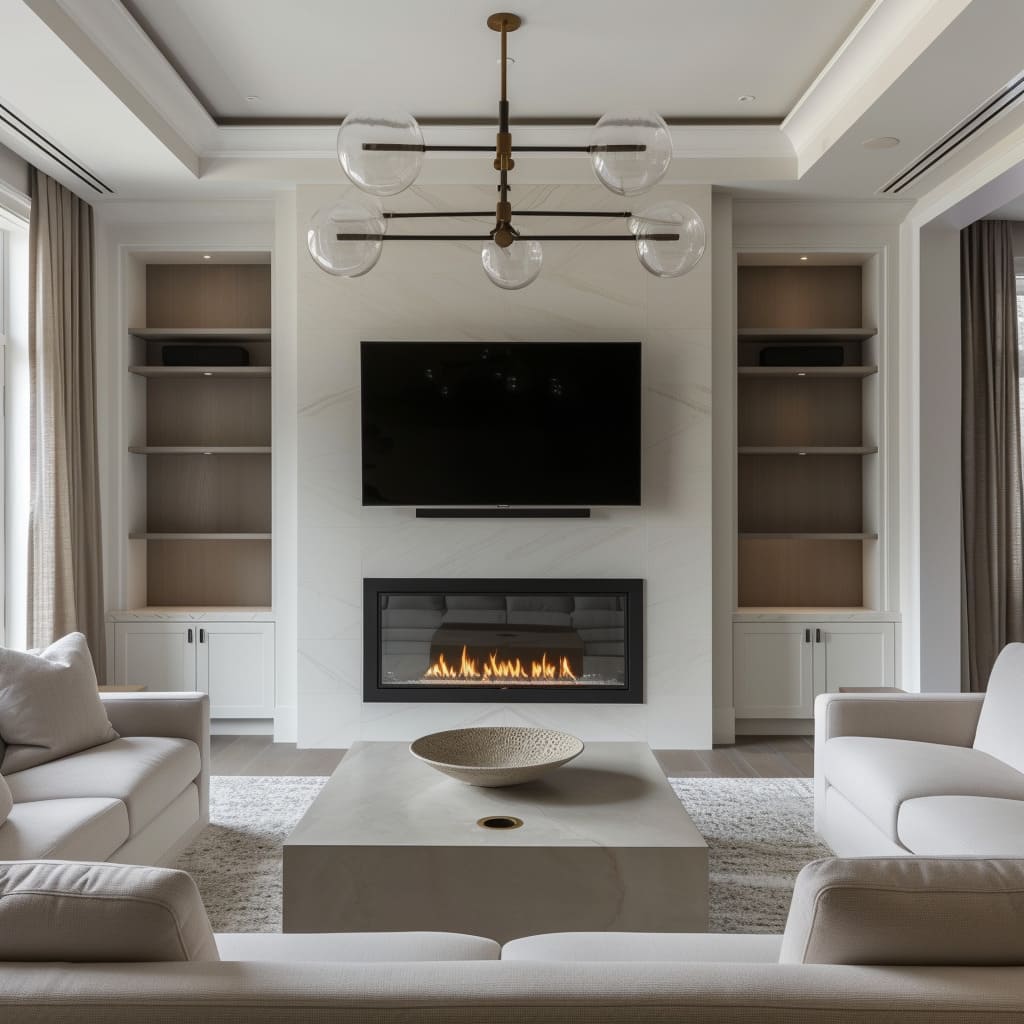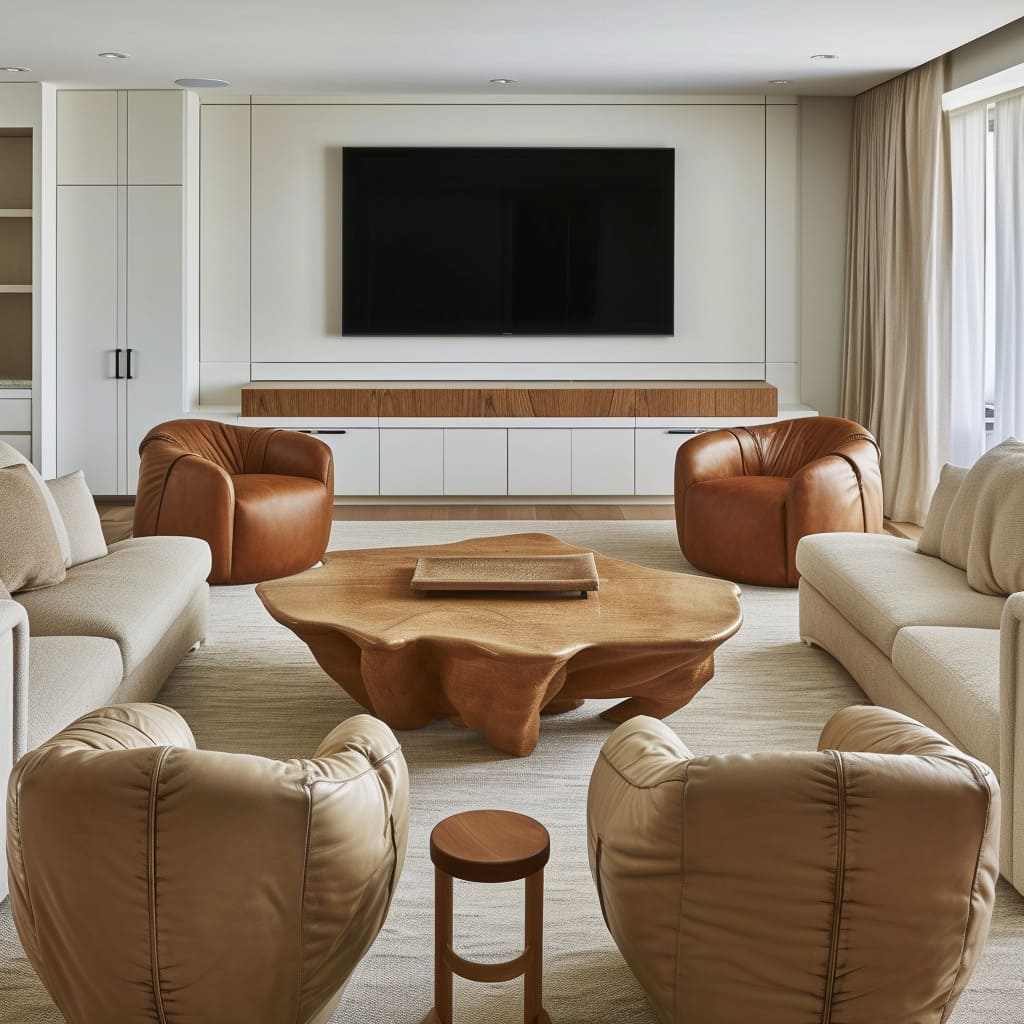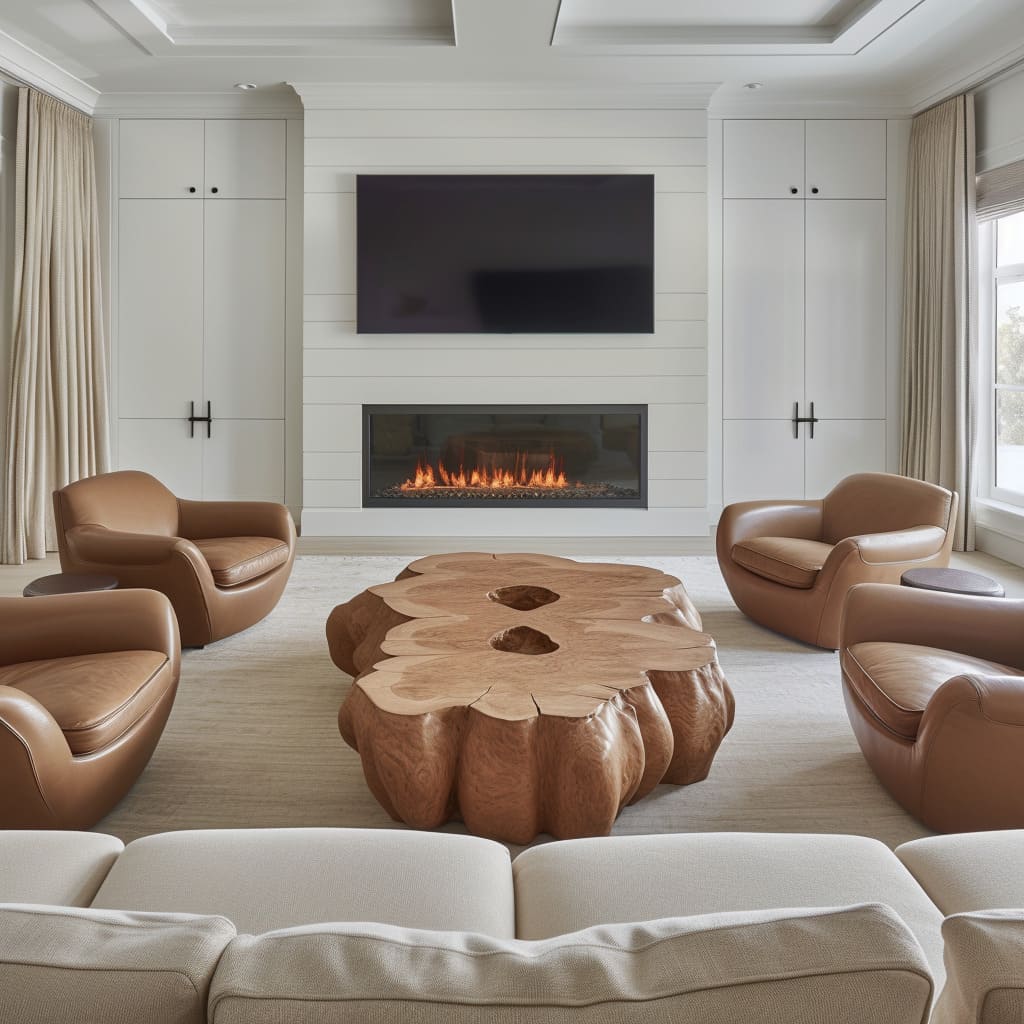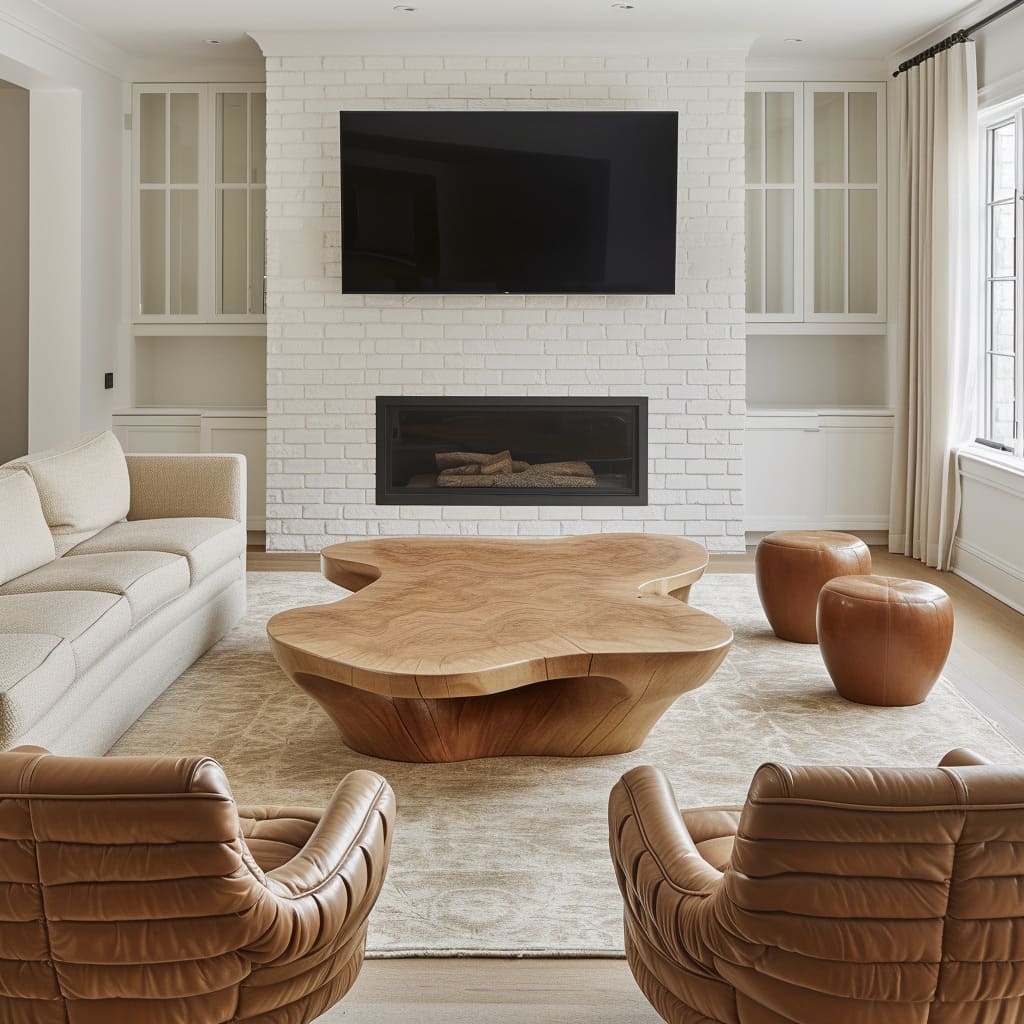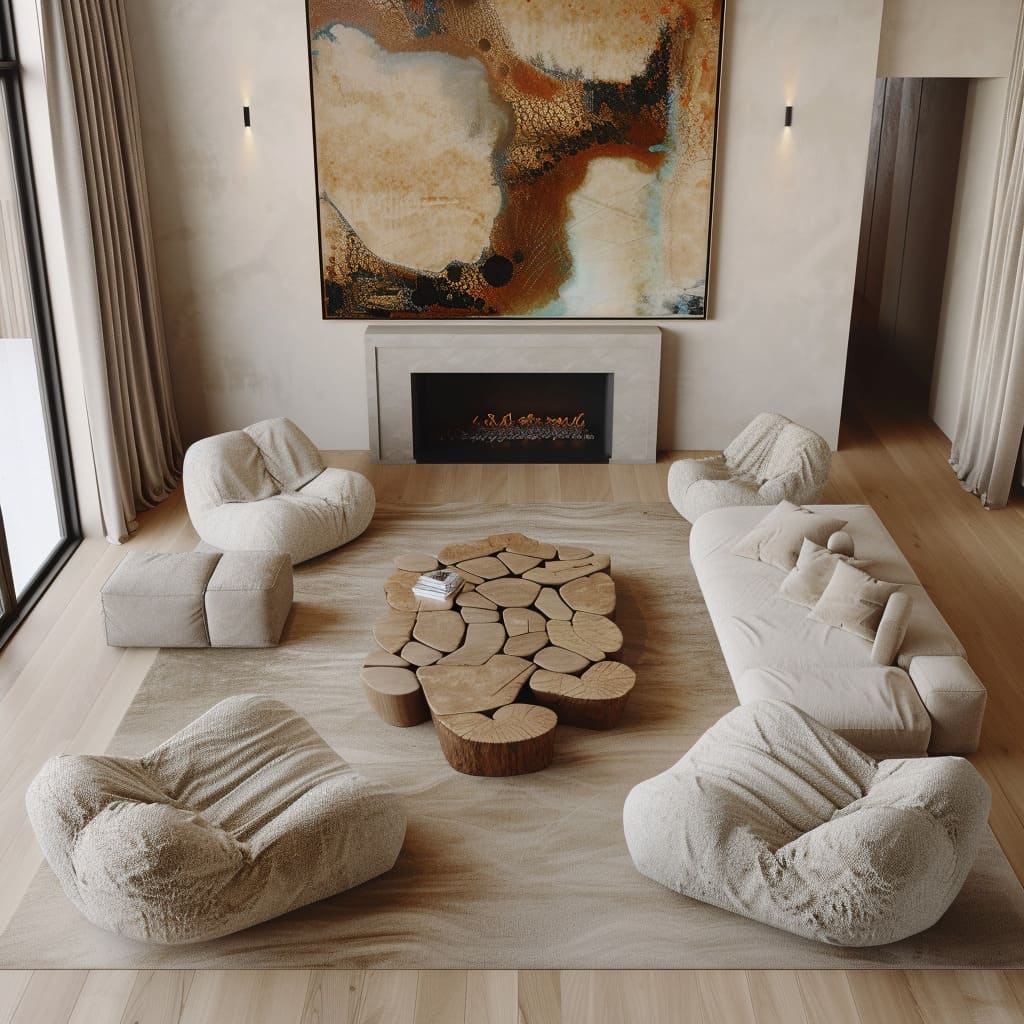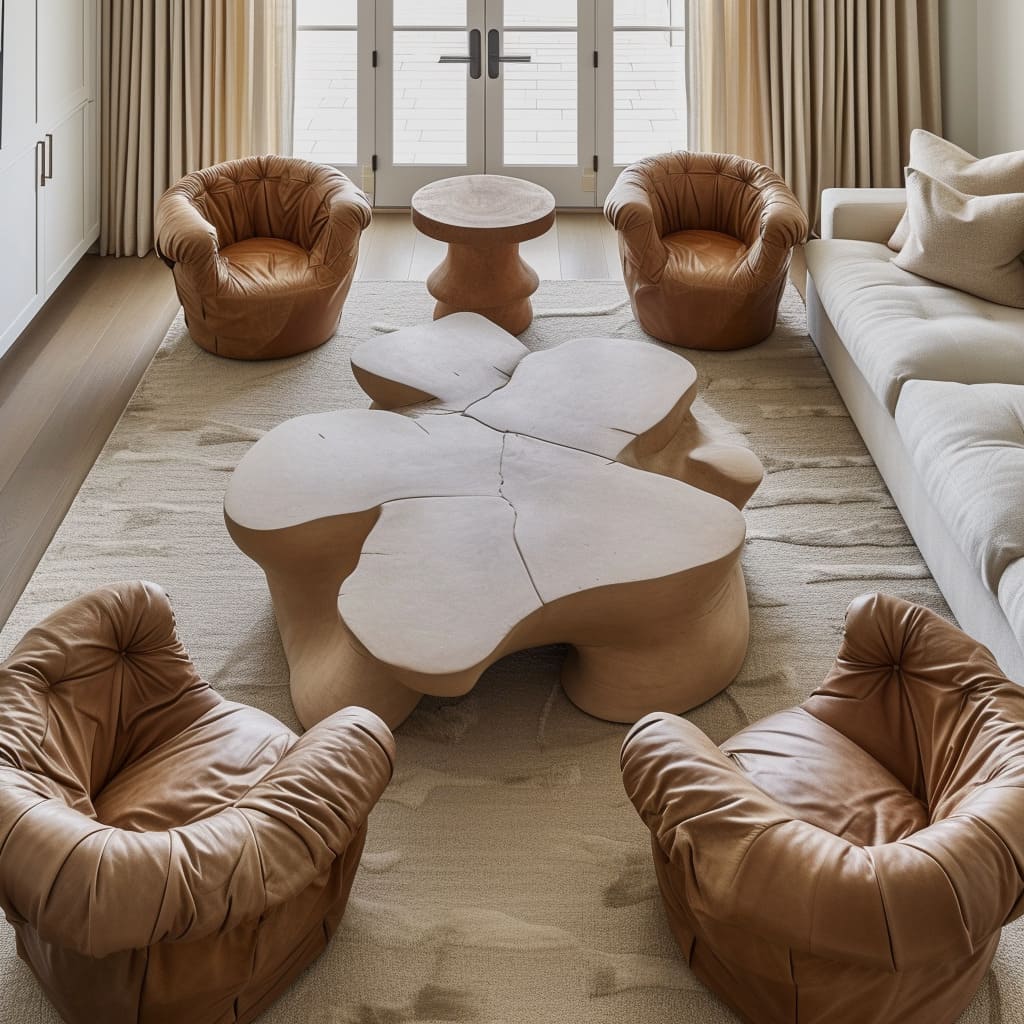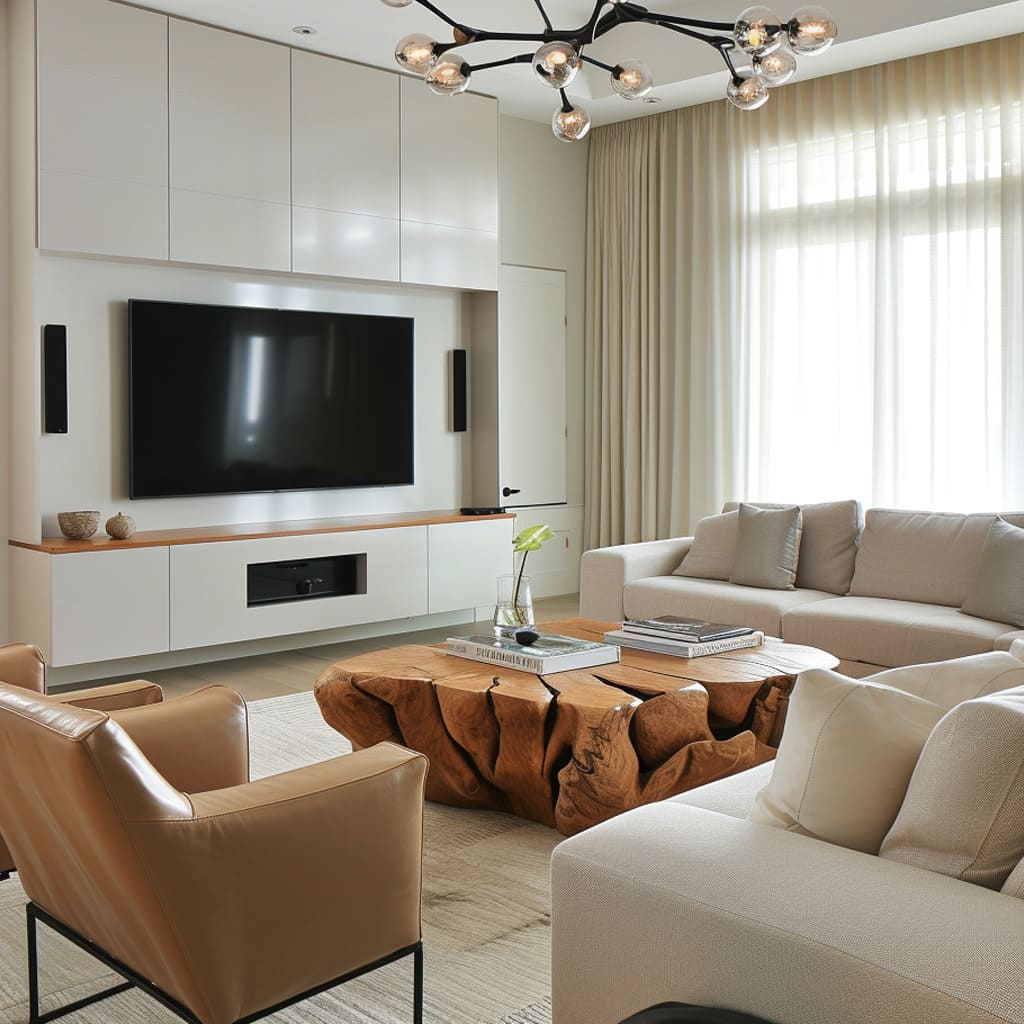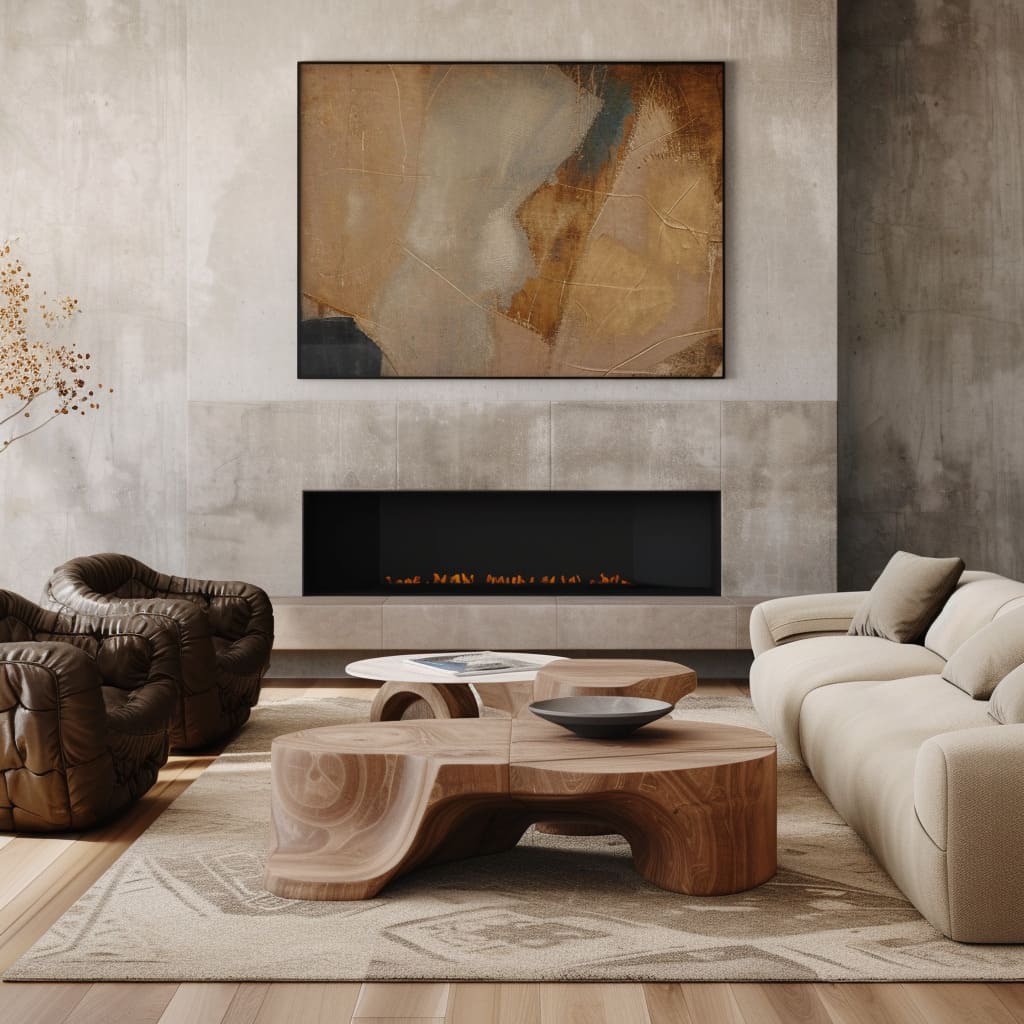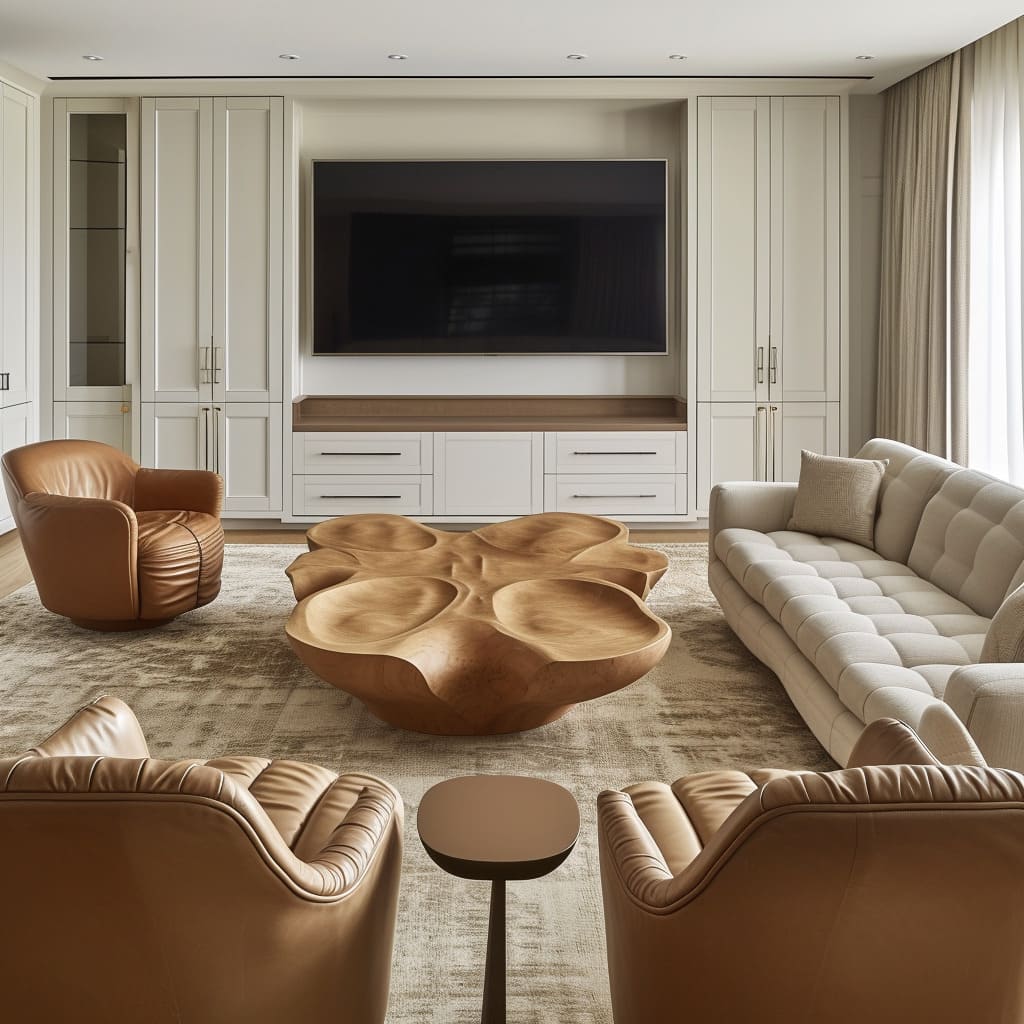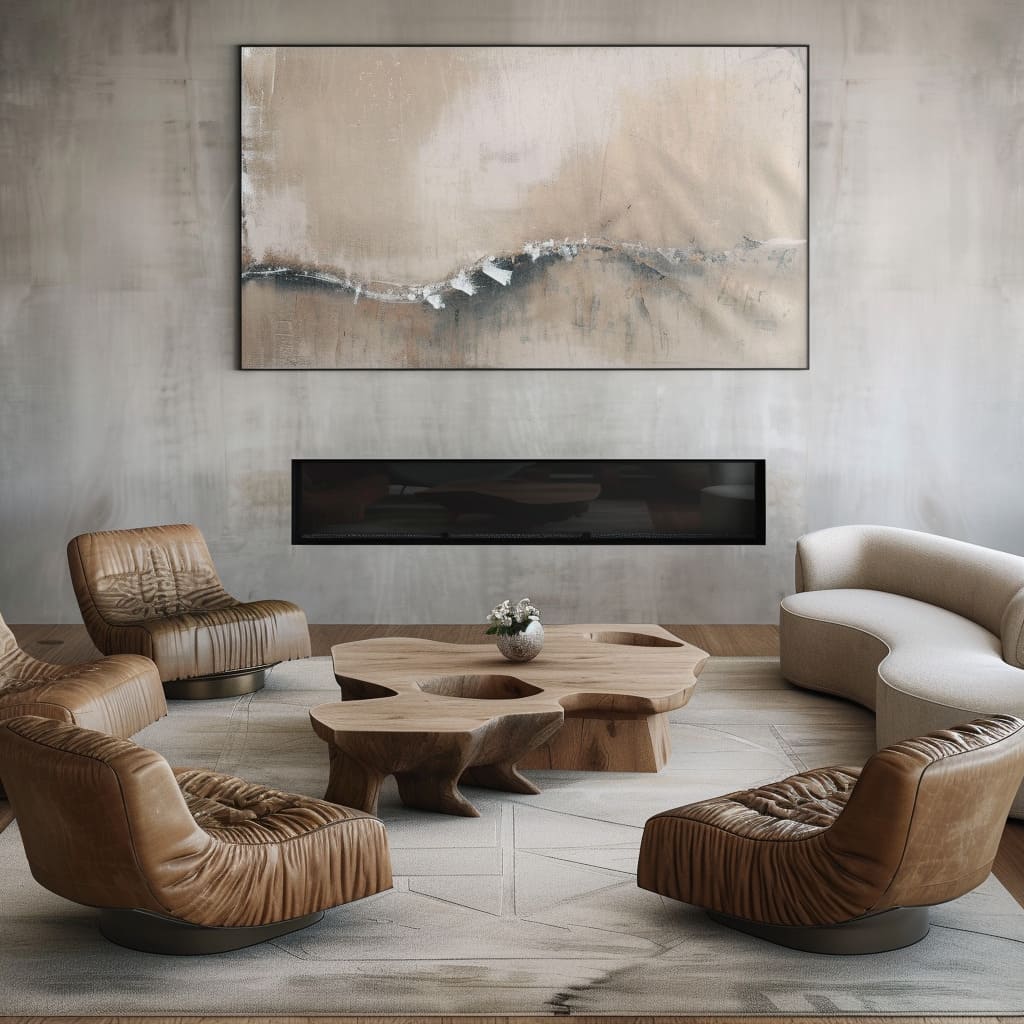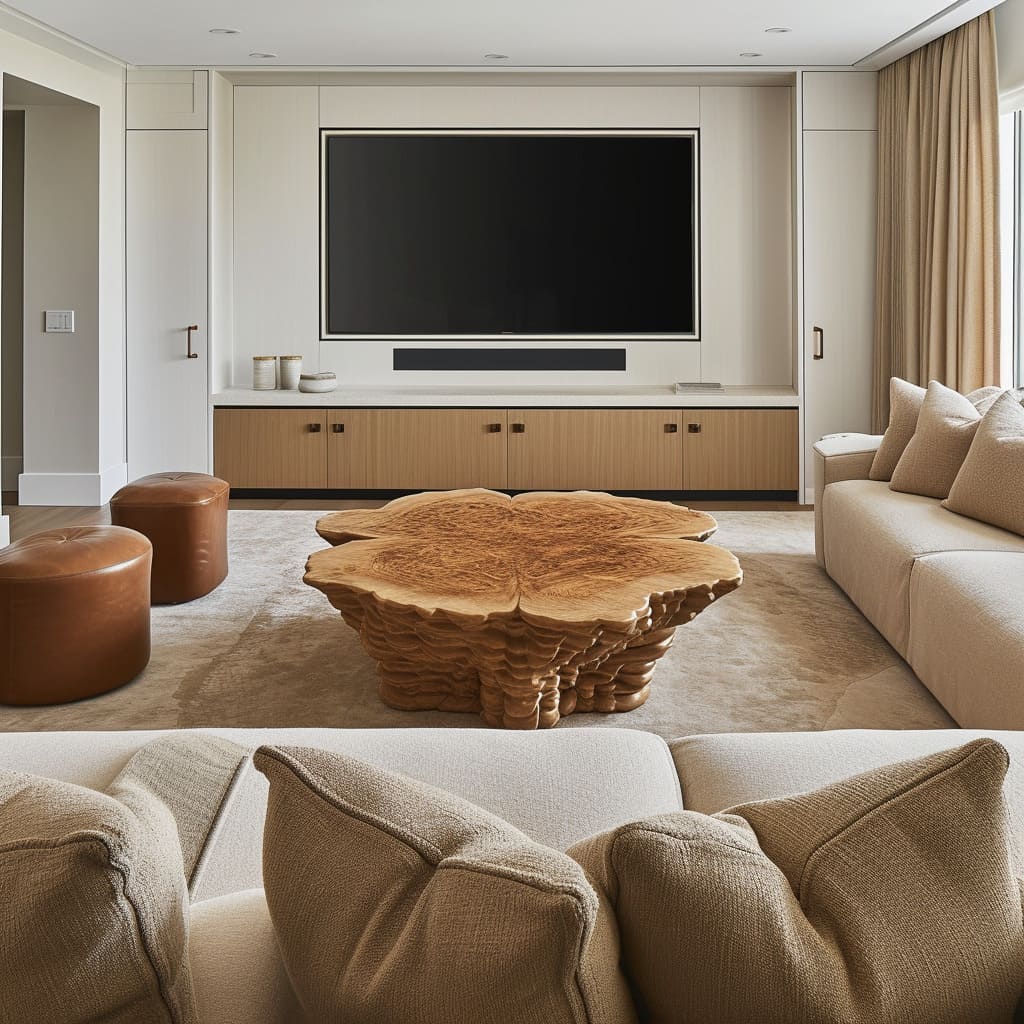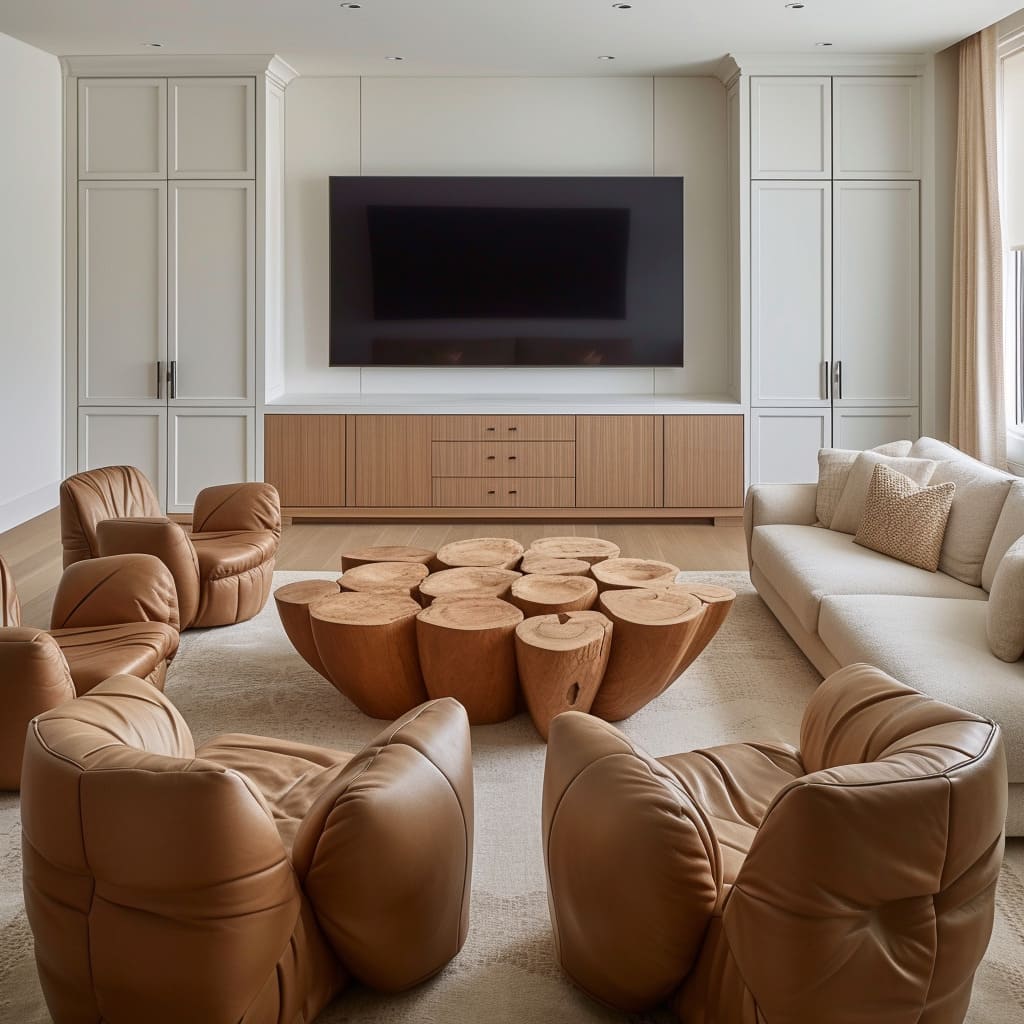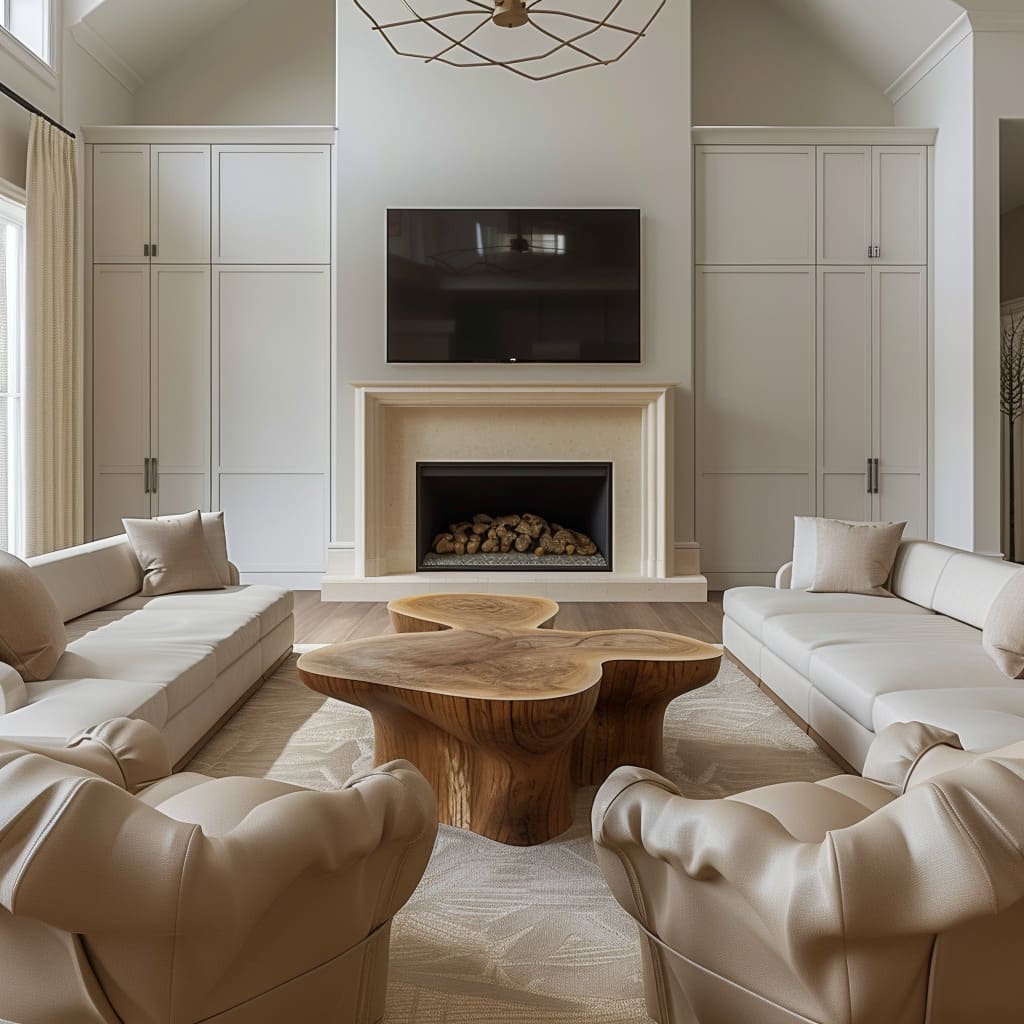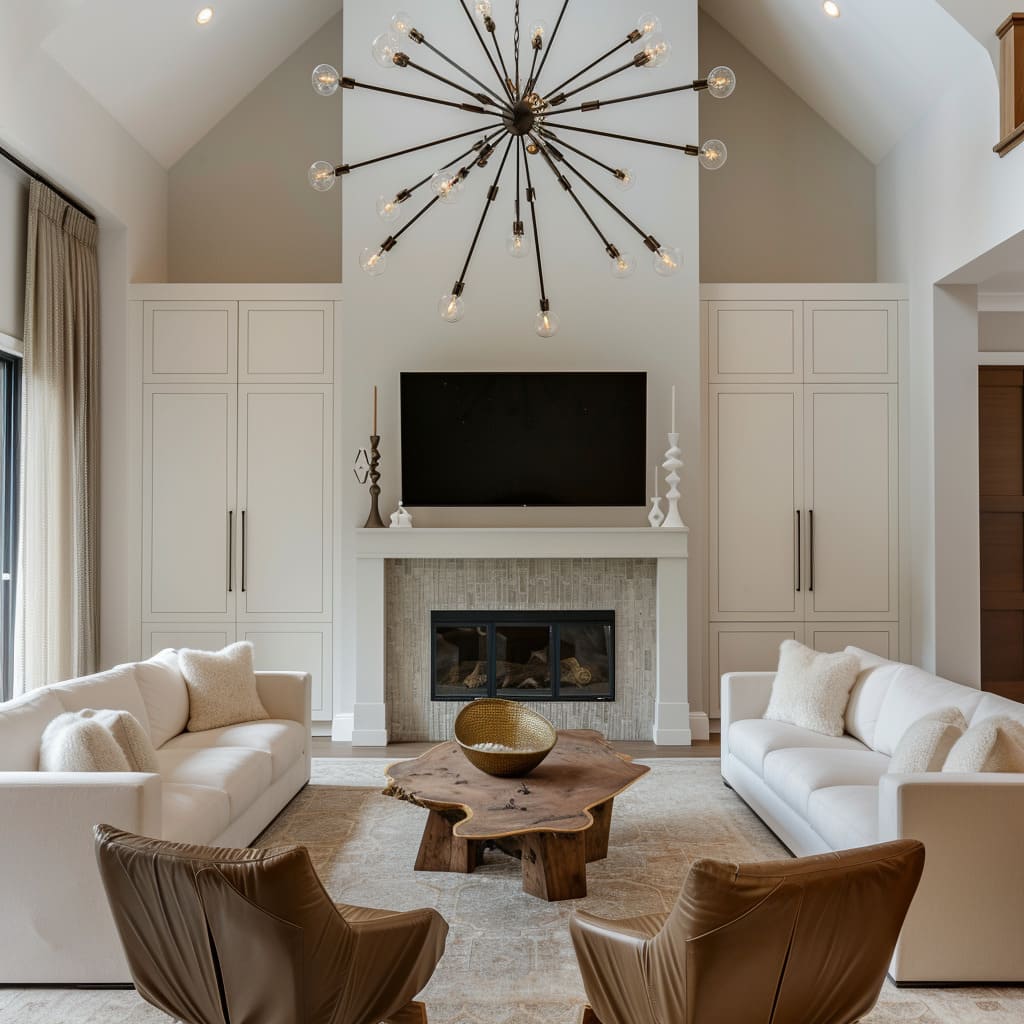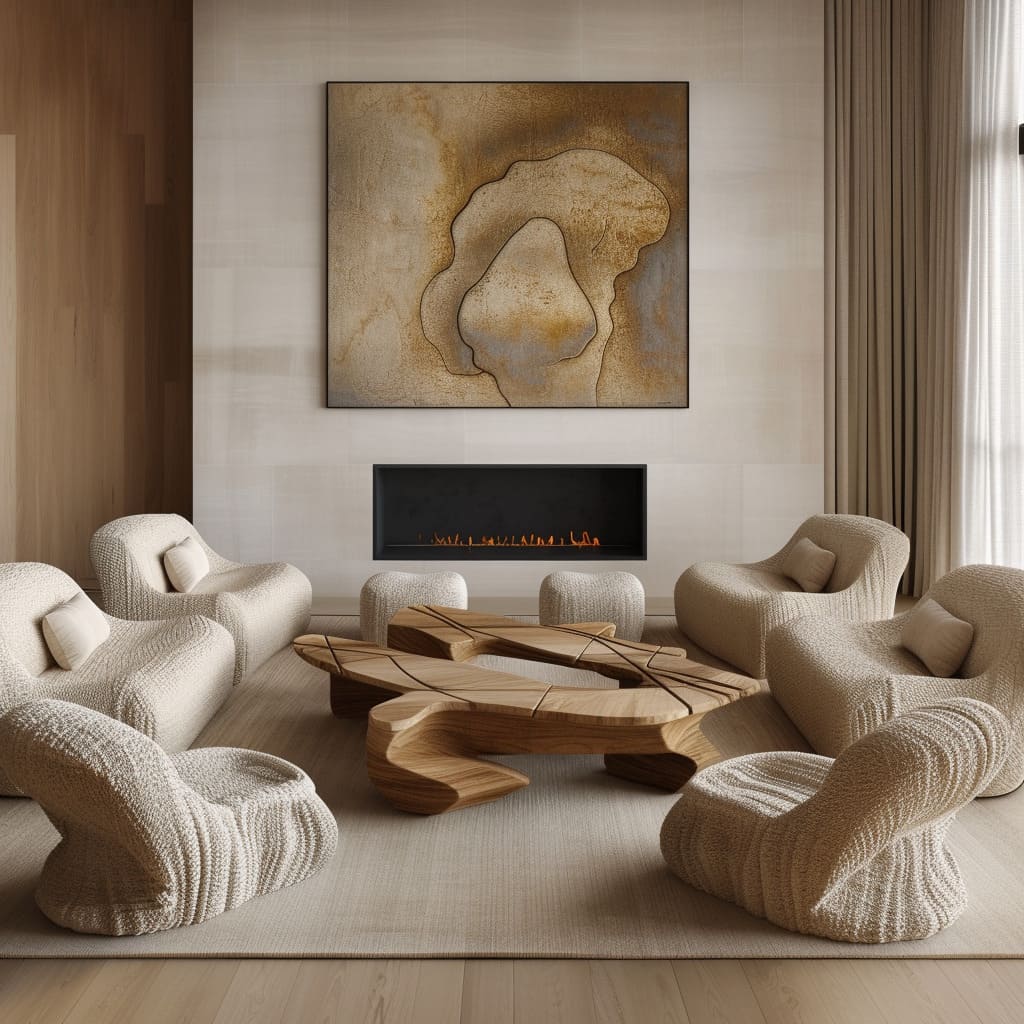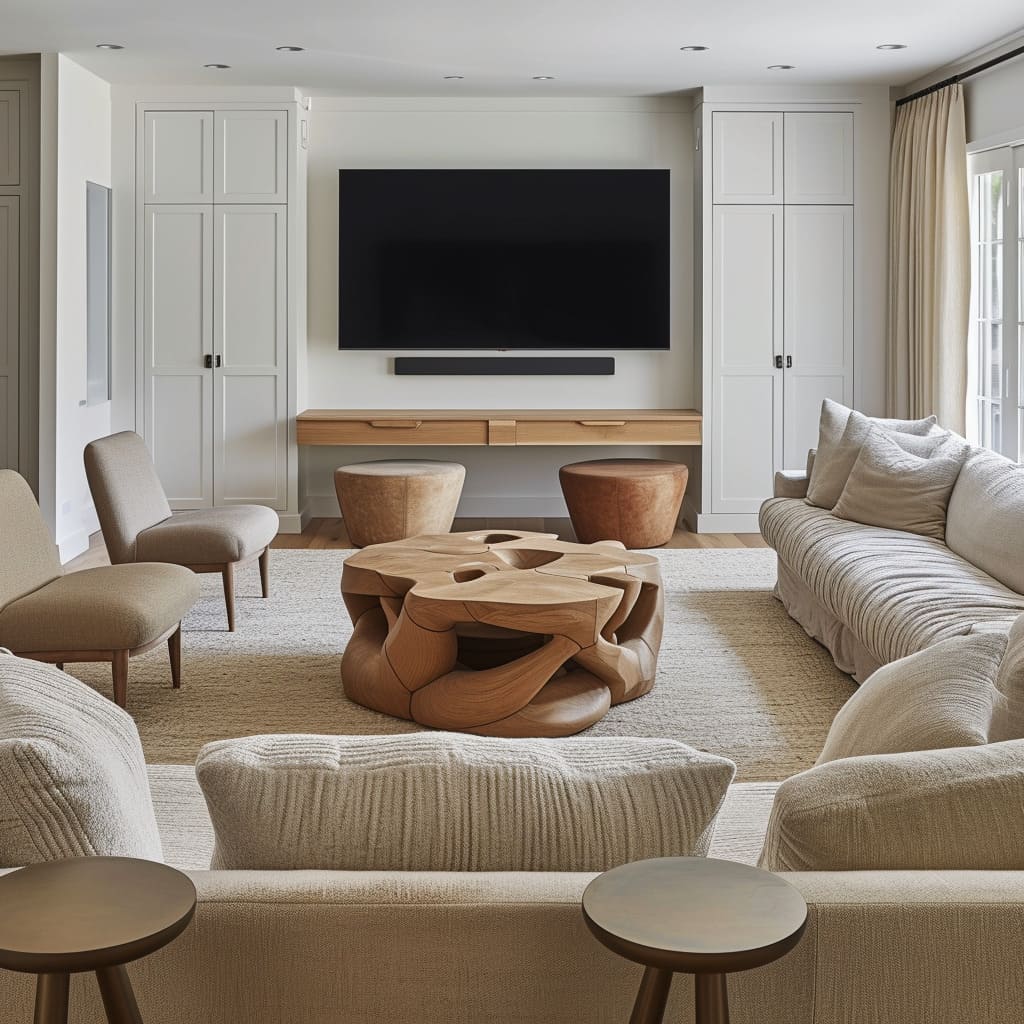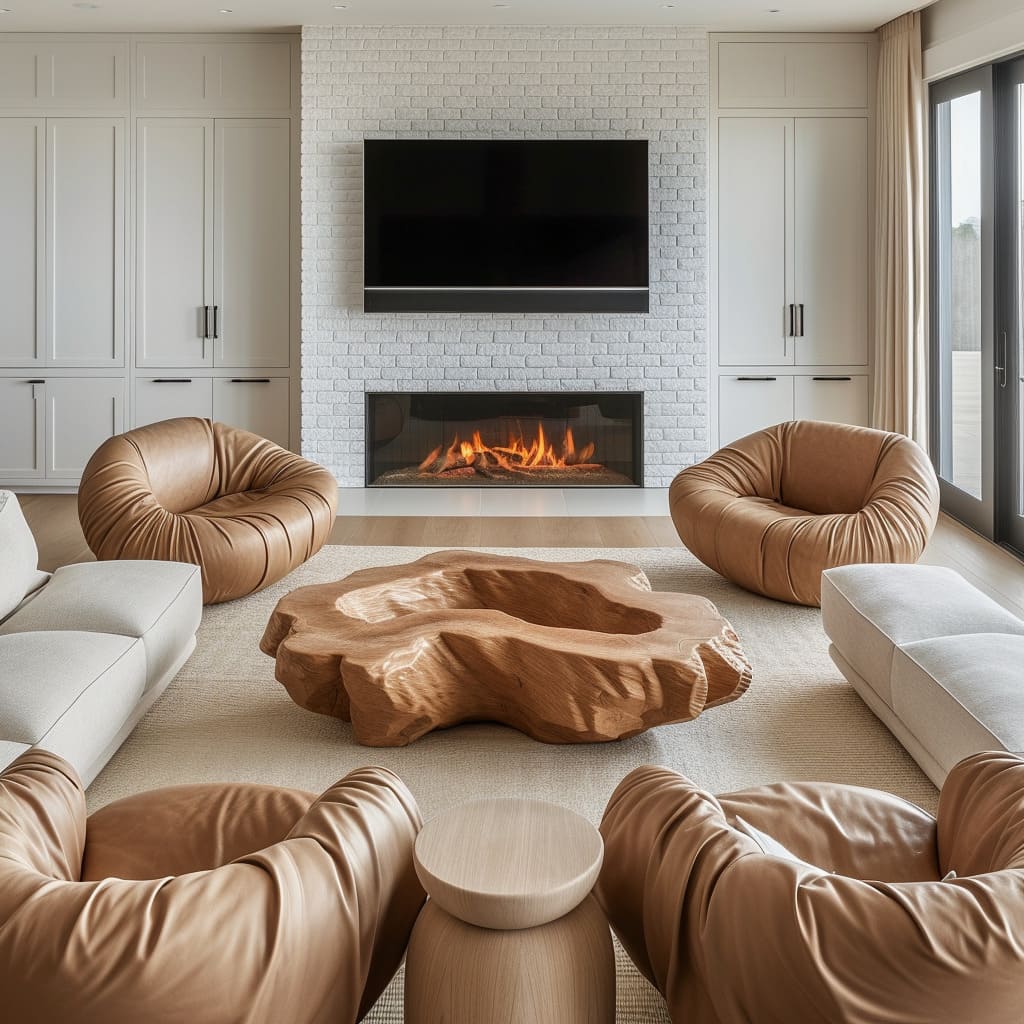Welcome to an exploration of interior designs where modern luxury converges with the serene principles of minimalism and the inherent beauty of organic form. This discourse is more than a mere examination of space arrangement; it’s a journey through a design ethos that champions subtlety, sophistication, and the natural flow of life itself.In the following sections, we will navigate the nuanced landscape of a furniture style that has come to define the zeitgeist of contemporary interior trends.
Prepare to immerse yourself in the philosophy behind the design, the meticulously chosen materials, and the intentional functionality that together crystallize this modern approach to living spaces. Whether you are seeking inspiration for your own abode or simply wish to indulge in the aesthetic pleasures of well-curated interiors, this article promises to be your guide into the elegantly understated world of modern, minimalist, and organically inspired furniture.
The Philosophy of Contemporary Organic Luxury
The essence of this furniture style is the seamless blend of organic form with luxurious materials and textures. It eschews the rigidity of traditional design for a more fluid and natural approach.Each piece of furniture is not just functional; it is a statement, mirroring forms found in nature, which bring a sense of calm and serenity to the living space. The designs are thoughtful, intended to be both visually pleasing and intimately connected with the environment they inhabit.Furniture pieces are carefully placed to encourage easy movement, suggesting a dance between the user and the space.
Expanding on this, the designs evoke a sense of bespoke craftsmanship, where every angle and curve is tailored to the human form. The idea is to create spaces that feel personal and intimate, rooms that wrap around you in a gentle embrace.For those looking to incorporate this furniture style into their own homes, it’s important to consider not just the individual pieces but the flow of the room as a whole. Seek out furniture that feels like it has a life of its own – pieces that seem to grow from the floor and have an organic, almost animated presence.
Materials: A Symphony of Textures and Tones
High-quality materials are at the forefront of this style. Rich leathers, polished woods, and textured fabrics are chosen for their tactile qualities as well as their aesthetic appeal.The use of natural wood with its grains and imperfections adds character and warmth, while leather pieces in rich browns and creams offer comfort and durability. Fabrics are often nubby or bouclé, inviting touch and adding visual interest.These materials are not just for beauty; they are meant to be lived in and used, growing more distinctive with age.
To delve deeper, the interplay of these materials within a single space is akin to a well-orchestrated symphony. Each texture plays its part, contributing to the overall atmosphere without overwhelming the senses.When introducing such textures into your own home, consider the balance of soft and hard, shiny and matte, smooth and rough. It’s this balance that creates a sensory experience that is both harmonious and inviting.
Sofas and Seating: Comfort Meets Curves
The sofas and armchairs are plush, emphasizing comfort and inviting relaxation. The silhouettes are soft, with curved lines and often rounded forms that envelop the user.This design choice breaks away from the stark lines of minimalism, offering a more approachable and cozy feel. The seating is designed to be a haven, a place to unwind and feel supported by the gentle contours of the furniture.
Building on this, the seating arrangements are carefully considered to cultivate an atmosphere of inclusiveness and warmth. The curves of the sofas and chairs are designed to encourage conversation, facing inward to invite interaction and closeness.For those looking to achieve a similar feel in their own space, consider the positioning of your seating. Arrange your sofas and armchairs in a way that fosters engagement and togetherness, ensuring that each seat is as inviting as it is comfortable.
Tables: Sculpted Landscapes
Perhaps the most striking aspect of this furniture style is the coffee tables. They resemble sculpted landscapes, with undulating surfaces and edges that rise and dip like valleys and hills.These pieces are often made from a single block of wood, their natural edges and surfaces celebrated rather than hidden, making each piece one of a kind. The artistry involved in their creation is evident, as the table surfaces are meticulously sanded and finished to reveal the unique patterns and tones of the wood, making them as much a piece of art as they are a functional item in the home.
To further enhance these sculptural pieces, designers often play with the table’s finish—opting for a matte sheen that accentuates the wood’s natural beauty or a gloss that reflects the interior’s lighting. For those inspired by these tables, selecting a piece for your home involves considering the space’s existing elements and aiming for a table that acts as the room’s centerpiece.The table should not only fill a function but also evoke emotion and admiration, standing as a testament to nature’s inherent beauty.
Chairs: The Art of Repose
The armchairs, particularly noticeable in their tan and brown leathers, are designed with both aesthetics and ergonomics in mind. The leather is molded and stitched to create seats that support and conform to the body.These are not merely chairs but personal retreats within the larger living space. The thoughtful placement of these chairs in relation to other furniture and architectural elements encourages relaxation and contemplation.They often feature gentle reclining angles and armrests that support various sitting positions, allowing the user to linger comfortably for hours.
Incorporating such chairs into your own space means paying attention to both form and function. Opt for chairs that offer adjustable support and are covered in high-quality, durable materials that age gracefully.The ideal chair should serve as a personal sanctuary, offering a respite from the day’s demands. Position these chairs strategically in your space to take advantage of natural light or a favorite view, enhancing the overall experience of repose.
Built-ins and Shelving: The Elegance of Organization
Complementing the freestanding pieces are built-in shelving and cabinetry. Their clean lines and flush integration with the walls offer a modern take on storage.The shelves are more than just practical; they’re designed to display and to be part of the overall composition of the room. The built-ins are often designed with subtle lighting to showcase decorative items and books, enhancing their functionality and aesthetic appeal.The custom nature of these pieces means they fit perfectly into the intended space, appearing as a natural extension of the architecture.
See how today’s architects shape tomorrow’s living by integrating technology and design in contemporary architectural structures—learn more in our article.
When looking to integrate such shelving into your own home, the key is customization. Work with a designer or craftsman to create units that not only fit your space but also reflect your personal style and storage needs.Consider the use of materials that complement the other pieces in your room, and plan for a mix of open and closed storage to display cherished items while hiding away clutter. With built-ins, you have the opportunity to create a cohesive look that flows seamlessly with the rest of your home’s design.
Fireplaces: The Warmth of Modernity
The fireplaces in these designs are modern and streamlined, often gas-powered for clean burning and ease of use. They are encased in materials that reflect the overall design—marble, stone, or metal—providing warmth and serving as a modern hearth for gathering.These fireplaces are designed to be an effortless blend of function and form, providing a focal point that is both aesthetically pleasing and a source of physical warmth. Their sleek designs often feature glass fronts that enhance the flame’s visibility, contributing to the ambiance without the mess and maintenance of traditional wood-burning fireplaces.
To bring this element into your own home, consider the architectural style of your space and the kind of statement you want your fireplace to make. A fireplace can be as subtle or as bold as you wish; it can blend into the wall with a minimalist design or stand out with an elaborate surround.Additionally, modern fireplaces come with a variety of venting options, making them suitable for installation in many different home areas without the need for a traditional chimney.
The Allure of Simplicity
In every piece, there is a sense of intentionality. There are no superfluous elements; each curve, line, and material is considered for its impact on the whole.This minimalist approach ensures that the space is not overwhelmed, and the beauty of each piece can stand out. The simplicity in design is not merely the absence of complexity, but the presence of refined elegance.It’s about achieving better design through simplicity, stripping away the non-essential to reveal the furniture’s true essence.
To adopt this minimalist approach in your own interior, focus on purchasing fewer but higher-quality pieces. Look for furniture with simple, yet thoughtful designs that prioritize function.Select items with clean lines and neutral colors that can easily blend with a variety of decor themes. The key is to create a space that feels both open and inviting—a sanctuary that is both aesthetically pleasing and calming to the mind.
The Cohesiveness of Design
Throughout these spaces, the furniture speaks a common language. The dialogue between materials, the continuity of form, and the harmony of function all contribute to a design ethos that is at once modern and timeless.This cohesiveness is achieved through a deliberate selection of pieces that complement each other in both style and substance. The furniture sets the tone for the space, with each item chosen not only for its individual appeal but also for its contribution to the room’s overall narrative.
To create a cohesive design in your own space, start with a clear vision of the mood you wish to evoke. Consider creating a mood board that combines your chosen color palette, textures, and key pieces of furniture to ensure they harmonize with one another.When selecting furniture, think about how each piece will interact with others and the space as a whole. Aim for a balance between variety and uniformity, allowing each piece to stand out without disrupting the collective aesthetic.Remember, cohesiveness in design doesn’t necessarily mean matching sets; it’s about the thoughtful combination of elements to achieve a unified and pleasing whole.
In conclusion, the furniture style we have traversed in this article encapsulates more than just the physical attributes of modern luxury, minimalism, and organic form—it represents a lifestyle choice. It embodies the harmony between the environment and our personal spaces, a testament to the belief that less can indeed be more.This design approach, with its clean lines, natural materials, and thoughtful functionality, doesn’t just create a space; it curates an experience. It encourages us to find beauty in simplicity, to appreciate the understated elegance of craftsmanship, and to seek comfort in the contours that echo nature’s own designs.
As we step away from these pages and back into our lives, let us carry the inspiration of this contemporary trend with us. May we strive to create spaces that are not only visually stunning but also sanctuaries of calm and well-being.This furniture style isn’t just a fleeting trend; it’s a timeless approach to living that continues to evolve with us, promising enduring appeal and relevance in our homes and our hearts.


